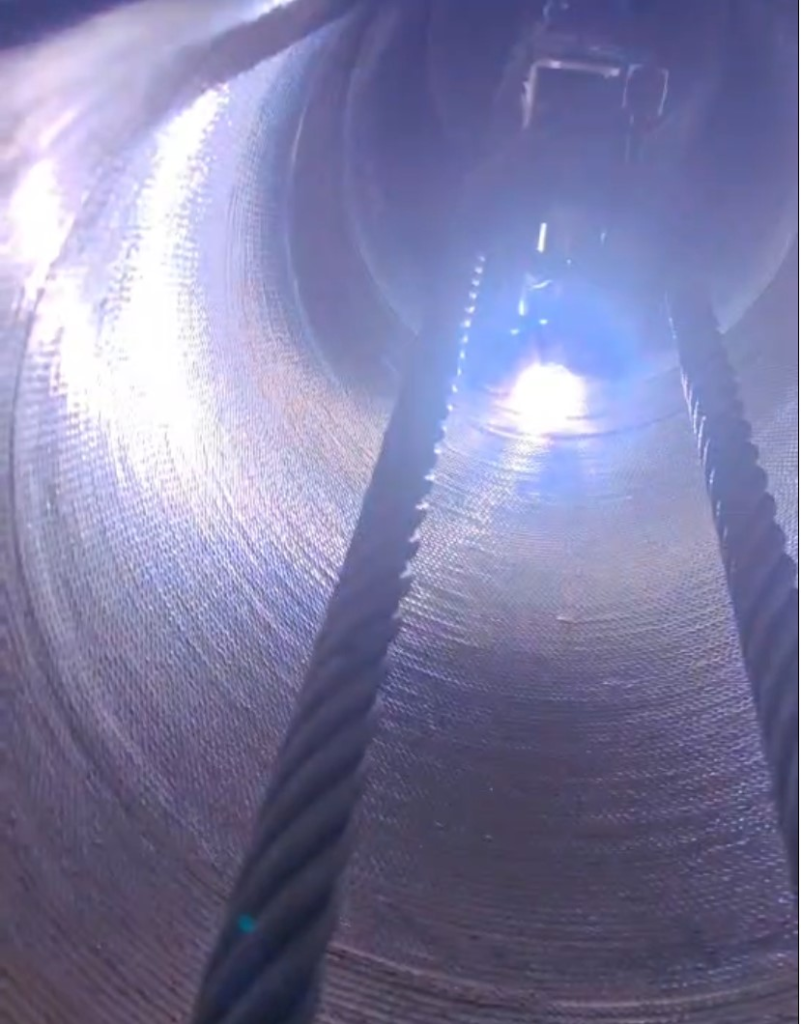What is API 5LD? Clad & Lined Steel Pipes for Corrosion‑Resistant Service
As industries move deeper into extreme environments—high pressure, high temperature, sour service—the need for cost-effective, corrosion-resistant pipelines is increasing. That’s where API 5LD becomes essential.
At FNS (Nanjing) Surface Engineering Technology Co., Ltd, we regularly work with this standard to support global oil & gas, petrochemical, and marine clients with high-performance clad and lined steel pipe solutions.

API 5LD CRA clad steel pipe showing corrosion-resistant alloy layer bonded over carbon steel base
What Is API 5LD?
API 5LD is the American Petroleum Institute specification for CRA (corrosion-resistant alloy) clad or lined steel pipe. It covers seamless and welded construction designed to deliver corrosion protection in aggressive media such as:
- Hydrogen sulfide (H₂S)
- Chlorides (Cl⁻)
- CO₂-rich or acidic fluids
Unlike solid alloy pipe, API 5LD allows for the bonding of a CRA layer onto a carbon steel substrate—giving users mechanical strength at lower cost, with tailored corrosion resistance.
Scope of API 5LD
According to the standard, API 5LD covers:
- Pipe diameters: Generally from 2 inches (50.8 mm) and above
- Wall thickness ranges: Defined based on application and pressure class
- Cladding/Lining methods: Hot-roll bonding, explosive bonding, weld overlay, and mechanical lining
- Product forms: Seamless, electric-resistance welded (ERW), or fusion-welded pipes
It also includes testing, inspection, marking, and certification requirements to guarantee compliance.
Why API 5LD Matters
Adopting API 5LD offers multiple benefits for both manufacturers and end users:
- Standardized Quality
It establishes uniform mechanical, chemical, and dimensional requirements, ensuring consistency across suppliers and batches. - Corrosion Resistance Assurance
CRA layers must meet strict adhesion, thickness, and integrity criteria to withstand corrosive media like sour gas or seawater. - Cost Efficiency
By using a carbon steel substrate with a CRA surface, API 5LD allows for reduced use of expensive alloys without compromising performance. - Global Acceptance
Projects across the Middle East, North America, and Southeast Asia recognize API 5LD as a reliable benchmark for pipeline material selection.
Clad vs. Lined: What’s the Difference?
Clad Pipe: CRA layer (e.g. Alloy 625, 316L, UNS S32750) is metallurgically bonded (via weld overlay or explosion bonding) onto carbon steel.
Lined Pipe: A mechanically bonded CRA sleeve (e.g. 6Mo, Incoloy) is inserted and fixed into the host pipe.
| Type | Bonding Method | Strength | Common Use |
|---|---|---|---|
| Clad Pipe | Weld/Explosion | High | Offshore sour service |
| Lined Pipe | Mechanical fitment | Moderate | Low-pressure corrosive flows |
At FNS, we support both configurations through surface engineering, pre-bond preparation, and CRA overlay consultation.
CRA Material Selection for API 5LD Pipes
CRA selection is key to performance. Based on API 5LD Annex A, common materials include:
- UNS N06625 (Inconel 625) – for severe sour service
- UNS S31254 (6Mo) – excellent chloride resistance
- UNS S32750 (Duplex) – high strength, crevice-resistant
- 316L/317L – for moderate chemical applications
Our engineering team ensures each CRA matches the intended environment—optimizing lifespan and reducing total lifecycle cost.
Surface Finish & Inspection Requirements
API 5LD specifies strict controls over CRA surface finish, typically requiring:
- MSS SP-6 finish ≤ 63 microns
- Visual inspection for delamination or pitting
- UT or RT testing on the bonded interface
- ISO 15156/NACE MR0175 compliance for sour service
FNS provides pre-bond surface preparation (blasting, machining), coating thickness control, and inspection documentation according to ISO 10474.
Why FNS?
At FNS, we combine surface science with standards compliance. Whether you’re working with 6-inch CRA-lined pipe or 24-inch weld-overlay clad pipe, we help ensure:
- Proper surface treatment and CRA compatibility
- Conformity to API 5LD, ISO 15156, and client-specific specs
- Documented traceability, NDE reports, and dimensional accuracy
Talk to Our Experts
Need help with selecting CRA materials for API 5LD pipelines? Want advice on surface prep for cladding?
→ Contact our team at sales@fns-nanjing.com
Related Articles:
← Key Technical Requirements of API 5LD: Materials, Dimensions, and Tolerances
→Manufacturing CRA Clad and Lined Pipes Under API 5LD: From Cladding to Inspection


